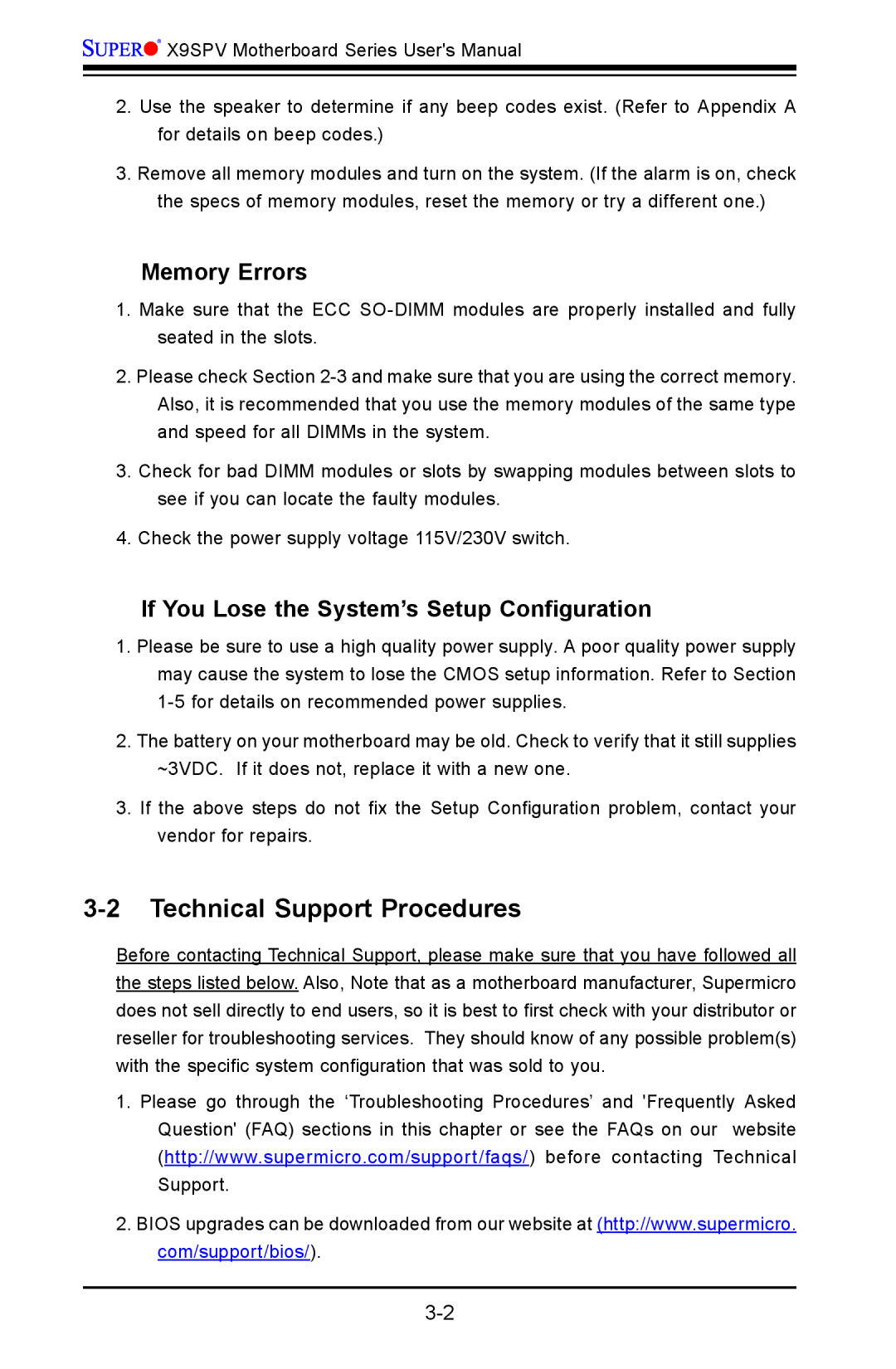
![]()
![]()
![]()
![]()
![]()
![]() X9SPV Motherboard Series User's Manual
X9SPV Motherboard Series User's Manual
2.Use the speaker to determine if any beep codes exist. (Refer to Appendix A for details on beep codes.)
3.Remove all memory modules and turn on the system. (If the alarm is on, check the specs of memory modules, reset the memory or try a different one.)
Memory Errors
1.Make sure that the ECC
2.Please check Section
3.Check for bad DIMM modules or slots by swapping modules between slots to see if you can locate the faulty modules.
4.Check the power supply voltage 115V/230V switch.
If You Lose the System’s Setup Configuration
1.Please be sure to use a high quality power supply. A poor quality power supply may cause the system to lose the CMOS setup information. Refer to Section
2.The battery on your motherboard may be old. Check to verify that it still supplies ~3VDC. If it does not, replace it with a new one.
3.If the above steps do not fix the Setup Configuration problem, contact your vendor for repairs.
3-2 Technical Support Procedures
Before contacting Technical Support, please make sure that you have followed all the steps listed below. Also, Note that as a motherboard manufacturer, Supermicro does not sell directly to end users, so it is best to first check with your distributor or reseller for troubleshooting services. They should know of any possible problem(s) with the specific system configuration that was sold to you.
1.Please go through the ‘Troubleshooting Procedures’ and 'Frequently Asked Question' (FAQ) sections in this chapter or see the FAQs on our website (http://www.supermicro.com/support/faqs/) before contacting Technical Support.
2.BIOS upgrades can be downloaded from our website at (http://www.supermicro. com/support/bios/).
